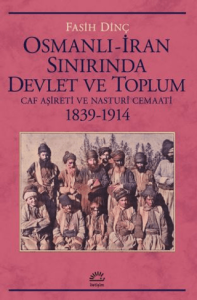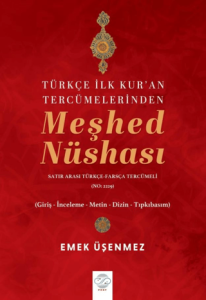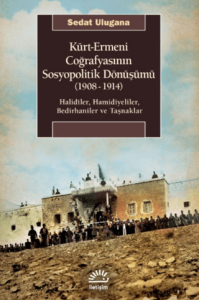9789756959916
217857

https://www.sahafium.com/kitap/sadberk-hanim-muzesi-koleksiyonundan-pabuc-p217857.html
Sadberk Hanım Müzesi Koleksiyonundan Pabuç From the Sadberk Hanım Museum Collection Shoes
0.00
kadın kıyafetleri koleksiyonunu bünyesinde bulundurmakta ve bu koleksiyona bağlı olarak gelişen, mütevazı ancak döneminin çeşitliliğini sunan bir ayakkabı koleksiyonuna da ev sahipliği yapmaktadır. 2014 yılının tematik sergisi olarak hazırlanan ?Pabuç, Sadberk Hanım Müzesi Koleksiyonundan? sergisi ile müzede yer alan koleksiyonun toplu olarak tanıtılması amaçlanıyor.
Sadberk Hanım Museum contains a magnificent collection of Ottoman women's garments dating from the 19th and early 20th centuries, based on Sadberk Koç's original private collection. As the collection has grown, so has the number of shoes, which although not large represents the diverse range of footwear worn during that period. The collection consists mainly of late Ottoman shoes and slippers, together with a small number made in Central Asia, Iran, North Africa, India and Europe. It also includes some examples dating from the early years of the Turkish Republic, established in 1923. The exhibition presents 127 examples of diverse footwear, including boots, shoes, slippers and clogs, some of which represent traditional types while others illustrate the influence of European fashions. Most of the shoes are made of leather or fabric and embroidered with metal wire and metal wrapped thread, or additionally with silk thread, sequins, beads and other decorative materials. Colgs carved from wood and decorated with mother-of-pearl, ivory, silver and other materials were widely used in Ottoman daily life and form an eye-catching section of the exhibition. Shoes containing labels provide information about the shoe manufacturers and retailers of the late Ottoman period. 1.100 gr.
Sadberk Hanım Museum contains a magnificent collection of Ottoman women's garments dating from the 19th and early 20th centuries, based on Sadberk Koç's original private collection. As the collection has grown, so has the number of shoes, which although not large represents the diverse range of footwear worn during that period. The collection consists mainly of late Ottoman shoes and slippers, together with a small number made in Central Asia, Iran, North Africa, India and Europe. It also includes some examples dating from the early years of the Turkish Republic, established in 1923. The exhibition presents 127 examples of diverse footwear, including boots, shoes, slippers and clogs, some of which represent traditional types while others illustrate the influence of European fashions. Most of the shoes are made of leather or fabric and embroidered with metal wire and metal wrapped thread, or additionally with silk thread, sequins, beads and other decorative materials. Colgs carved from wood and decorated with mother-of-pearl, ivory, silver and other materials were widely used in Ottoman daily life and form an eye-catching section of the exhibition. Shoes containing labels provide information about the shoe manufacturers and retailers of the late Ottoman period. 1.100 gr.
kadın kıyafetleri koleksiyonunu bünyesinde bulundurmakta ve bu koleksiyona bağlı olarak gelişen, mütevazı ancak döneminin çeşitliliğini sunan bir ayakkabı koleksiyonuna da ev sahipliği yapmaktadır. 2014 yılının tematik sergisi olarak hazırlanan ?Pabuç, Sadberk Hanım Müzesi Koleksiyonundan? sergisi ile müzede yer alan koleksiyonun toplu olarak tanıtılması amaçlanıyor.
Sadberk Hanım Museum contains a magnificent collection of Ottoman women's garments dating from the 19th and early 20th centuries, based on Sadberk Koç's original private collection. As the collection has grown, so has the number of shoes, which although not large represents the diverse range of footwear worn during that period. The collection consists mainly of late Ottoman shoes and slippers, together with a small number made in Central Asia, Iran, North Africa, India and Europe. It also includes some examples dating from the early years of the Turkish Republic, established in 1923. The exhibition presents 127 examples of diverse footwear, including boots, shoes, slippers and clogs, some of which represent traditional types while others illustrate the influence of European fashions. Most of the shoes are made of leather or fabric and embroidered with metal wire and metal wrapped thread, or additionally with silk thread, sequins, beads and other decorative materials. Colgs carved from wood and decorated with mother-of-pearl, ivory, silver and other materials were widely used in Ottoman daily life and form an eye-catching section of the exhibition. Shoes containing labels provide information about the shoe manufacturers and retailers of the late Ottoman period. 1.100 gr.
Sadberk Hanım Museum contains a magnificent collection of Ottoman women's garments dating from the 19th and early 20th centuries, based on Sadberk Koç's original private collection. As the collection has grown, so has the number of shoes, which although not large represents the diverse range of footwear worn during that period. The collection consists mainly of late Ottoman shoes and slippers, together with a small number made in Central Asia, Iran, North Africa, India and Europe. It also includes some examples dating from the early years of the Turkish Republic, established in 1923. The exhibition presents 127 examples of diverse footwear, including boots, shoes, slippers and clogs, some of which represent traditional types while others illustrate the influence of European fashions. Most of the shoes are made of leather or fabric and embroidered with metal wire and metal wrapped thread, or additionally with silk thread, sequins, beads and other decorative materials. Colgs carved from wood and decorated with mother-of-pearl, ivory, silver and other materials were widely used in Ottoman daily life and form an eye-catching section of the exhibition. Shoes containing labels provide information about the shoe manufacturers and retailers of the late Ottoman period. 1.100 gr.




















